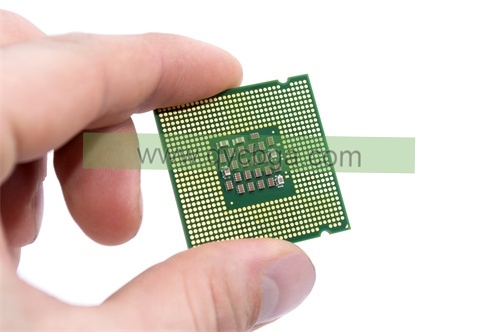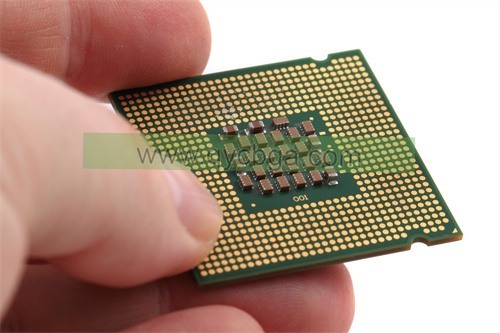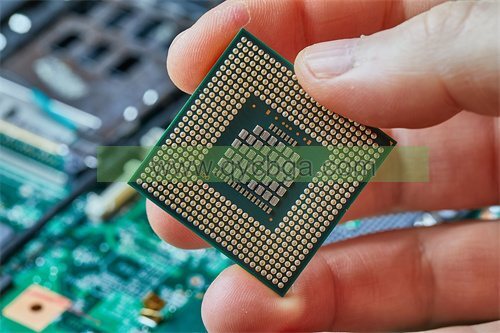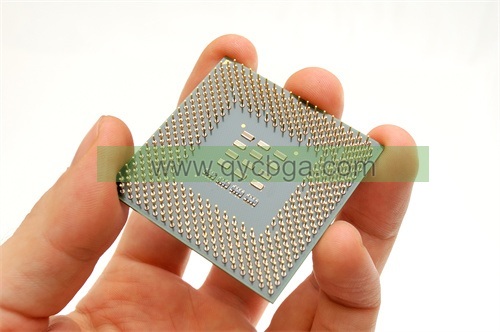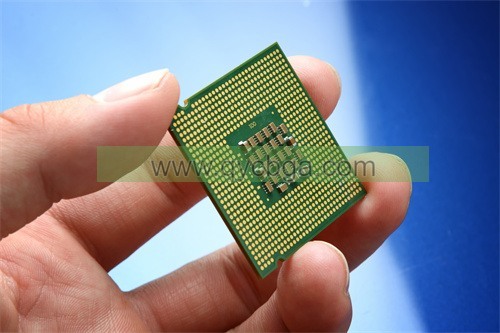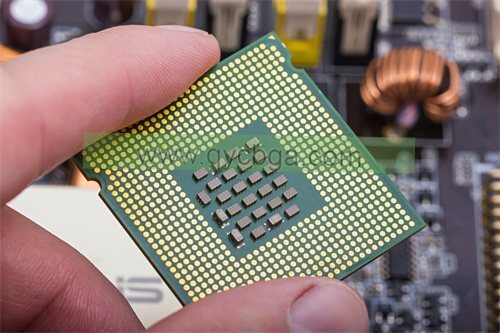ABFとは(味の素) パッケージ基板?
ABFの(味の素) パッケージ基板メーカー,ABFの (味の素ビルドアップフィルム) パッケージ基板は、半導体パッケージに使用される最先端の材料です, その優れた電気的特性と信頼性で知られています. この基板は、ビルドアップフィルム技術を採用しています, 導電性トレースと絶縁材料の多層をコンパクトなフォームファクタで作成可能. ABF基板は高い熱伝導率を提供します, 優れたシグナルインテグリティ, そして機械安定性, 高速かつ高密度のアプリケーションに最適です. FCBGAやWLPなどの高度な半導体パッケージで一般的に利用されています, ABFパッケージ基板は、さまざまな電子機器で信頼性の高い性能と耐久性を確保します, スマートフォンからデータセンターまで, スペース効率と信頼性が重要な場合.
FCBGA は 略 “フリップチップボールグリッドアレイ。” これは、半導体業界で使用される集積回路パッケージング技術の一種です. FCBGAパッケージ, シリコンダイ (実際の集積回路) 逆さまにして、基板に直接取り付けます (通常、セラミックまたは有機材料).
基板には、はんだボールのグリッド配列が含まれています, これは、ダイとそれが取り付けられている回路基板との間の電気的接続として機能します. このタイプのパッケージには、いくつかの利点があります, より良い電気的性能を含む, 熱管理の改善, また、従来の包装方法に比べて設置面積が小さい.
基板自体は、FCBGAパッケージの主要コンポーネントです. これは、ダイを機械的にサポートし、ダイとシステムの他の部分との間の電気的接続を容易にします. 基板の材料は、アプリケーションの特定の要件によって異なります, しかし、それは通常、集積回路の電気的および熱的要求を処理できる高性能材料です.
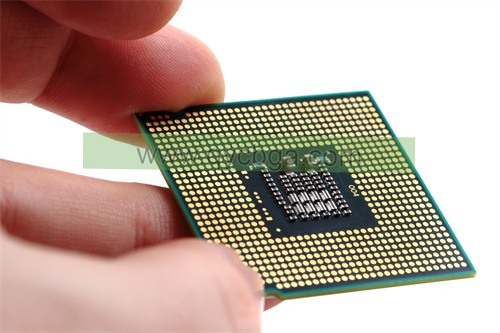
ABFの(味の素) パッケージ基板メーカー
ABFの(味の素) パッケージ基板設計リファレンスガイド.
The ABFの (味の素ビルドアップフィルム) 基板 は、半導体製造に使用されるパッケージ基板の一種です. これは、集積回路のさまざまなコンポーネント間の電気的接続を作成するための銅トレースが埋め込まれた絶縁材料の層で作られたビルドアップ基板です. 味の素は、ABF基板の開発・製造で知られる会社です.
ABFパッケージ基板設計のリファレンスガイドには、通常、次の情報が含まれます。:
- 基板材料仕様: ABF基板材料の組成と特性に関する詳細, 電気を含む。, 熱の, および機械的特性.
- デザインガイドライン: 基板のレイアウト設計のガイドライン, トレースルーティングのルールを含む, ビア配置, パッドサイズ, とレイヤースタックアップ.
- シグナルインテグリティに関する考慮事項: 信号の劣化と電磁干渉を最小限に抑えるための情報 (EMIの) 適切な基板設計を通じて, 制御されたインピーダンス配線と配電ネットワーク設計を含む.
- サーマルマネジメント: パッケージ内の熱放散を管理するための戦略, サーマルビアやヒートスプレッダーなど, 集積回路の適切な機能を確保するため.
- パッケージのサイズと寸法: アプリケーションの特定の要件に基づいて基板の適切なサイズと寸法を決定するための推奨事項.
- 信頼性のガイドライン: パッケージの長期的な信頼性を確保するためのガイドライン, はんだ接合部の完全性に関する考慮事項を含む, 機械的ストレス, と環境要因.
- 製造および組み立てのガイドライン: 製造プロセスに関する推奨事項, 基板製造や組み立て技術など, 高収率の生産と品質を確保するため.
- 電気テストのガイドライン: 基板の電気的性能をテストするためのガイドライン, 許容可能な性能のためのテスト方法と基準を含む.
これらは、ABFパッケージ基板設計のリファレンスガイドで通常カバーされる重要な側面の一部です. ABF基板を使用した集積回路の開発に関与するエンジニアや設計者向けの包括的なリソースとして機能します.
ABFで使用されている材料は何ですか(味の素) パッケージ基板?
The ABFの (味の素ビルドアップフィルム) パッケージ基板 通常、材料のいくつかの層で構成されています, それぞれが基板の構造と性能において特定の機能を提供します. 正確な組成は、特定の要件や用途によって異なる場合があります, ABFパッケージ基板に使用される代表的な材料は次のとおりです:
- ビルドアップレイヤー: ABF基板のコアは、複数のビルドアップ層で構成されています, 絶縁材料の薄膜であるもの. これらの層は通常、ポリイミドやエポキシ樹脂などのポリマー材料でできています. これらの層は、銅トレース間に電気絶縁を提供し、多層相互接続構造の作成を容易にします.
- 銅トレース: ビルドアップ層内には銅線トレースが埋め込まれています, 電気信号の伝導経路として機能します. これらのトレースは、リソグラフィープロセスを使用してパターン化され、通常は絶縁層にメッキされます. 銅は良好な導電性を提供し、高速信号伝送に適しています.
- バリアレイヤー: 場合によっては, 銅イオンが絶縁材料に拡散するのを防ぐために、バリア層をビルドアップ構造に含めることができます, これにより、時間の経過とともに電気的特性が低下する可能性があります. バリア層は通常、チタンやタンタルなどの材料でできています.
- ソルダーマスク: 基板の最上層は、多くの場合、はんだマスクです, これは、酸化を防ぎ、組み立て中のはんだ付けを容易にするために銅トレースに塗布される保護コーティングです. ソルダーマスク材料は通常、エポキシベースまたはポリイミドベースであり、スクリーン印刷プロセスを使用して塗布されます.
- 表面仕上げ: 基板の表面に露出した銅パッドは、はんだ付け性を高め、酸化を防ぐために表面仕上げでコーティングすることができます. 一般的な表面仕上げには、無電解ニッケル浸漬金が含まれます (エニグ), 有機はんだ付け性防腐剤 (OSPの), および浸漬錫または銀.
- 接着剤層: ABF基板では、接着剤層を使用して、ビルドアップ層を接着し、基板をパッケージアセンブリ内の他のコンポーネントに取り付けることができます. 接着剤は通常エポキシベースで、製造中にビルドアップ層間に薄膜として塗布されます.
これらは、ABFパッケージ基板の構築に使用される主要な材料です. 特定の構成とレイヤリングスキームは、パフォーマンス要件などの要因によって異なる場合があります, 製造プロセス, とコストに関する考慮事項.
ABFはどうですか(味の素) パッケージ基板製造?
ABFの製造工程 (味の素ビルドアップフィルム) パッケージ基板には、高密度の相互接続を作成するためのいくつかのステップが含まれます (HDIの) 半導体パッケージングに適した基板. 具体的な詳細は、製造元やアプリケーションの正確な要件によって異なる場合があります, 一般的なプロセスには、通常、次の主要なステージが含まれます:
- 基質調製: このプロセスは、ベース基板材料の準備から始まります, 通常、ポリイミドフィルム. フィルムは、接着性を高め、均一性を促進するために表面処理を施すことができます.
- 積層: 誘電体材料の多層, 通常、ドライフィルムまたは液体樹脂の形で, ベース基板にラミネートされています. これらの層は、導電性トレース間の絶縁として機能し、基板の電気的および機械的特性を定義します.
- 回路パターニング: 銅箔は接着剤を使用して誘電体層に接着されます, そして、フォトリソグラフィーやエッチングなどのプロセスを通じて、目的の回路パターンが作成されます. フォトリソグラフィーでは、銅箔にフォトレジスト層を塗布します, 所望の回路パターンを持つフォトマスクを介してUV光を露光する, 次に、パターンを定義するためのレジストを開発します. エッチングにより露出した銅を除去, 目的の痕跡を残す.
- ビアフォーメーション: ビア, これは、基板層に開けられた、または形成された小さな穴です, 基板の異なる層間に電気的接続を確立するために作成されます. これは、レーザー穴あけを使用して実現できます, メカニカルドリル, またはパンチングプロセスを介して.
- ビルドアッププロセス: 追加の誘電体層と導電トレースは、ビルドアッププロセスを使用して順次追加されます, これには、ラミネートを繰り返すことが含まれます, パターニング, 必要に応じて形成ステップを経て、必要な層数と相互接続密度を達成します.
- 表面仕上げ: 基板の表面は通常、はんだ付け可能な領域を定義し、下にある銅トレースを保護するために、はんだマスクでコーティングされます. 浸漬金や無電解ニッケル浸漬金などの表面仕上げ (エニグ) はんだ付け性や耐食性を向上させるためにも適用できます.
- 最終検査と試験: 完成したABFパッケージ基板は、品質と性能の基準を満たしていることを確認するために、厳格な検査とテストを受けています. これには、目視検査が含まれる場合があります, 電気試験, 熱サイクルなどの要因を評価するための信頼性試験, はんだ接合の信頼性, 寸法精度.
これらの製造手順に従ってください, ABFパッケージ基板メーカーは、半導体パッケージアプリケーションの特定の要件に合わせた高品質の基板を製造できます, 高密度相互接続を要求するものを含む, ファインピッチトレース, そして優秀な電気性能.
ABFの応用分野(味の素) パッケージ基板
ABFの (味の素ビルドアップフィルム) パッケージ基板は、半導体業界のさまざまな分野で用途があります, 特に、スペースに制約のある高度なパッケージング技術では, 高い信号密度, そして優れた電気的性能が重要な要素です. 一般的なアプリケーション分野には、次のようなものがあります:
- モバイルデバイス: ABF基板は、スマートフォンなどのモバイル機器のパッケージングに広く使用されています, 錠剤, およびウェアラブル. 彼らの細いプロファイル, 軽量性, また、高密度の相互接続に対応する能力により、コンパクトでポータブルな電子機器に最適です.
- 家電: モバイルデバイスを超えて, ABF基板は、デジタルカメラを含むさまざまな家電製品にも採用されています, ゲーム機, スマートホームデバイス, およびポータブルメディアプレーヤー. これらのアプリケーションには、ABF基板が有効です’ 小型化と高速データ転送に対応.
- ネットワーキングおよびテレコミュニケーション: ABFパッケージ基板は、ルーターなどのネットワークおよび通信機器で重要な役割を果たします, スイッチ, 基地局, および光トランシーバー. これらのアプリケーションには、データ通信およびネットワーキングプロトコルをサポートする高性能の相互接続ソリューションが必要です.
- カーエレクトロニクス: 自動車業界, ABF基板は、先進運転支援システムで使用されます (ADASの), インフォテインメントシステム, エンジンコントロールユニット (ECU(エキュエート), およびその他の電子部品. 信頼性を提供します, 熱安定性, 過酷な動作条件に耐える能力.
- 産業用アプリケーション: ABF基板は、産業オートメーションなどのさまざまな産業用途でも採用されています, ロボティックス, 制御システム, および計装. 高速データ伝送を処理し、要求の厳しい環境での動作能力により、産業用アプリケーションに最適です.
- 医療機器: 医療分野では, ABF基板は医用画像機器に利用されています, 患者モニタリングデバイス, 診断ツール, および埋め込み型医療機器. 信頼性を提供します, 小型化, 医療機器の設計に不可欠な高密度相互接続.
- 航空宇宙・防衛: ABFパッケージ基板は、アビオニクスを含む航空宇宙および防衛用途で使用されています, レーダーシステム, 通信機器, およびミサイル誘導システム. 彼らは信頼性を提供します, パフォーマンス, 航空宇宙および防衛電子機器に必要な堅牢性.
全, ABFパッケージ基板は、コンパクトなサイズで業界全体の幅広いアプリケーションに対応する汎用性の高いソリューションです, ハイパフォーマンス, そして信頼性は最優先事項です. 小型化の厳しい要件を満たす能力, 高速データ転送, また、熱管理は、半導体パッケージングのランドスケープにおいて不可欠です.
ABFの利点は何ですか(味の素) パッケージ基板?
ABFの (味の素ビルドアップフィルム) パッケージ基板には、半導体パッケージングアプリケーションにとって魅力的なオプションとなるいくつかの利点があります. 主な利点には、次のようなものがあります:
- 高密度インターコネクト: ABF基板は、高密度の相互接続を可能にします, よりコンパクトで小型化された電子パッケージを可能にする. これは、スペースの制約が重要なアプリケーションで特に有益です, モバイルデバイスやウェアラブル電子機器など.
- ファインピッチトレース: ABF基板は、線幅が狭く、導電素子間の間隔が狭いファインピッチトレースの作成をサポートします. この機能により、複雑な回路の統合が可能になり、高度な電子システムでの高速データ伝送が容易になります.
- フレキシブル基板: ABF基板は本質的に柔軟性があります, それらが湾曲した表面または不規則な表面に適合することを可能にします. この柔軟性により、硬質基板が実用的でないアプリケーションや、機械的ストレスを最小限に抑える必要があるアプリケーションに適しています, ウェアラブルデバイスやフレキシブルディスプレイなど.
- 優れた電気的性能: ABF基板は優れた電気的特性を提供します, 低誘電損失を含む, 高い絶縁抵抗, 一貫したシグナルインテグリティ. これらの特性は、電子システムの全体的な性能と信頼性に貢献します, 特に高周波および高速アプリケーションにおいて.
- サーマルマネジメント: ABF基板は、優れた熱伝導率と放熱特性を示します, 電子パッケージの熱問題の管理を支援. これは、デバイスの信頼性を維持し、過熱による性能低下を防ぐために不可欠です, 特にハイパワーアプリケーションの場合.
- 信頼性と耐久性: ABF基板は、厳しい信頼性基準を満たすように設計されています, 要求の厳しい動作環境での長期的な性能と耐久性を確保. それらは機械的ストレスに対する耐性を提供します, 湿気, と熱サイクル, 電子システムの信頼性向上.
- 製造可能性: ABF基板は、半導体業界で使用される標準的な製造プロセスに適合しています, フォトリソグラフィーなど, エッチング, とラミネート. これにより、製造プロセスが簡素化され、生産コストが削減されます, ABF基板を大量生産のための費用対効果の高い選択肢に.
- 環境への配慮: ABF基板は、環境に優しい材料とプロセスを使用して製造されています, 半導体パッケージングの持続可能な選択肢に. 有害物質に関連する規制を遵守し、電子製品の全体的な持続可能性に貢献します.
全, ABFパッケージ基板は、さまざまな性能を兼ね備えています, 柔軟性, また、幅広い半導体パッケージングアプリケーションに適した信頼性を備えています. 電子システムの進化する要求に対応しながら、製造効率と環境の持続可能性を提供する能力は、多くの設計者やメーカーに好まれる選択肢となっています.
ABFはいくらですか(味の素) パッケージ基板コスト?
ABFのコスト (味の素ビルドアップフィルム) パッケージ基板は、いくつかの要因によって異なります, 基板の仕様を含む, 複雑さ, 注文数量, と市況. 一般的に, ABF基板は、他の高度なパッケージング技術と比較して競争力のある価格であると考えられています, ただし、メーカーと顧客との間の価格契約の所有権により、特定の価格情報は容易に入手できない場合があります.
ABFパッケージ基板のコストに影響を与える要因には、次のものがあります:
- 材料費: 原材料のコスト, ポリイミドフィルムを含む, 銅箔, 誘電体材料, 接着剤, と表面仕上げ, ABF基板の全体的なコストに大きく貢献しています. これらの材料の価格は、市場の需要と入手可能性に基づいて変動する可能性があります.
- 製造プロセスの複雑さ: ABF基板の製造に必要な製造プロセスの複雑さは、コストに影響を与える可能性があります. より複雑なデザイン, より細かいトレース, レイヤー数が多い, また、組み込みコンポーネントや熱管理構造などの追加機能により、製造コストが増加する可能性があります.
- ボリュームディスカウント: メーカーは、大量注文に対してボリュームディスカウントを提供することがよくあります, 数量が多いほどユニットあたりのコストが低くなります. 大量に注文するお客様は、基板あたりの価格が引き下げられる可能性があります.
- カスタマイズと追加サービス: ユニークなデザインなどのカスタマイズオプション, 特殊素材, または、追加の試験および認証サービスにより、追加費用が発生する場合があります. お客様は、カスタマイズされたABF基板をリクエストする際に、特定の要件と予算の制約を考慮する必要があります.
- サプライヤーとの関係: 顧客とサプライヤーの間の長期的な関係は、優遇価格契約やその他のコスト削減の機会につながる場合があります. サプライヤーとの強力なパートナーシップを確立することで、ABF基板の価格競争力が高まる可能性があります.
- 市場競争: ABF基板メーカー間の競争は、価格のダイナミクスに影響を与える可能性があります. お客様は、複数のサプライヤーからの見積もりを比較して、価格の最適な組み合わせを見つけることができます, 品質, とサービス.
具体的な価格情報については, お客様は通常、ABF基板メーカーに直接連絡して、プロジェクトの要件と数量のニーズに基づいて見積もりをリクエストする必要があります. かつ, 業界アナリストや市場調査レポートは、ABF基板市場における価格動向や競争動向に関する洞察を提供する場合があります.
ABFに関するFAQ(味の素) パッケージ基板
ABFパッケージ基板とは?
ABFパッケージ基板は、高密度相互接続の一種です (HDIの) 半導体パッケージに使用される基板. これは、銅トレースが埋め込まれた誘電体材料の複数の層で構成されています, 高密度などの利点を提供, 優れた電気的性能, と柔軟性.
ABFパッケージ基板を使用する利点は何ですか?
ABFパッケージ基板の利点には、高密度相互接続が含まれます, ファインピッチトレース, 柔軟性, 優れた電気的性能, 熱管理機能, 確実, そして環境への配慮.
ABFパッケージ基板の主な用途は何ですか?
ABFパッケージ基板は、半導体業界のさまざまな分野で使用されています, モバイルデバイスを含む, 家電, ネットワーキングおよび電気通信, 自動車用電子機器, 産業用アプリケーション, 医療機器, 航空宇宙および防衛.
ABFパッケージ基板はどのように製造されていますか?
ABFパッケージ基板の製造工程には、基板調製などの工程が含まれます, 積層, 回路パターニング, ビアフォーメーション, ビルドアッププロセス, 表面仕上げ, 最終検査とテスト.
ABFパッケージ基板にはどのような材料が使用されていますか?
ABFパッケージ基板は、通常、ポリイミドフィルムなどの材料で構成されています, 銅箔, 誘電体材料 (例えば。, エポキシ樹脂, ポリイミド, 液晶ポリマー), 接着剤層, バリアフィルム, ソルダーマスク, と表面仕上げ.
ABFパッケージ基板のコストに影響を与える要因?
ABFパッケージ基板のコストは、材料コストなどの要因によって異なります, 製造プロセスの複雑さ, ボリュームディスカウント, カスタマイズと追加サービス, サプライヤーとの関係, と市場競争.
ABFパッケージ基板に関する詳細情報はどこで入手できますか?
ABFパッケージ基板に関する追加情報は、メーカーから入手できます, 業界出版物, 技術会議, 半導体パッケージング技術に特化したオンラインリソース.
 FCBGAパッケージ基板メーカー
FCBGAパッケージ基板メーカー


